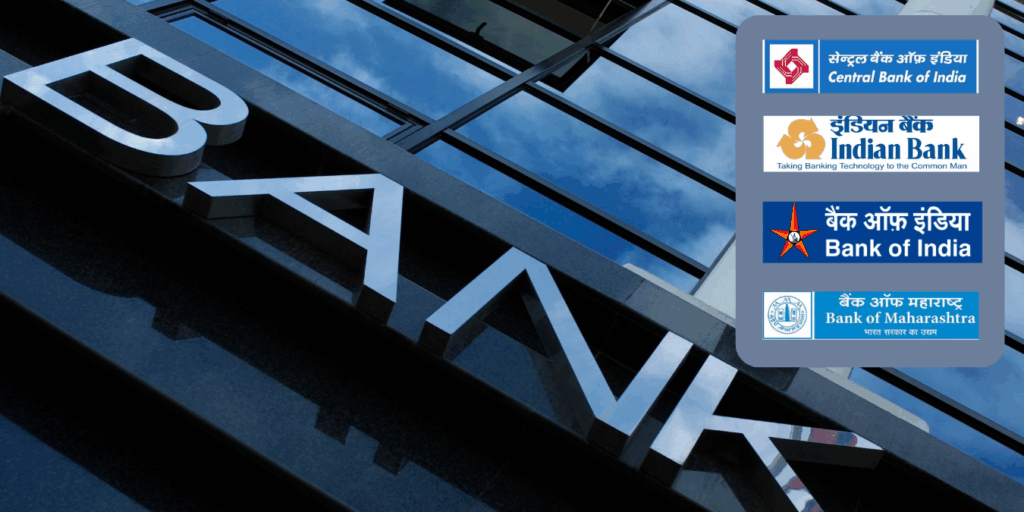
What You Didn’t Know About Canara Bank’s Big 2025 Q2 Profit Jump – What Analysts Aren’t Saying
How Canara Bank’s astonishing 19% Q2 profit surge in 2025 defies industry odds and reveals a hidden strength shaping India’s banking future. What’s driving this sharp turnaround while others struggle with rising costs and new RBI norms? Unlock the shocking details and smart insights now—your next investment move depends on it.
What if the story of a struggling public sector bank turned into a powerful success saga overnight? That captivating tale just unfolded for Canara Bank in the quarter ended September 2025, where the bank stunned markets and investors alike with a striking 19% jump in net profit to Rs 4,774 crore. This sudden leap isn’t just numbers on a spreadsheet—it’s a beacon signalling a hidden transformation within one of India’s oldest and most trusted banks.
In this article, you’ll unlock the smart insights behind Canara Bank’s latest quarterly triumph. Through a blend of performance analysis, trend spotting, and real examples, discover what drives this rapid growth and why it matters deeply to stakeholders across India’s financial ecosystem.
Canara Bank Q2 2025: At a Glance
- Net profit surged by 19% year-on-year to Rs 4,774 crore.
- Total income rose over 11% to Rs 38,598 crore.
- Gross Non-Performing Asset (GNPA) ratio improved sharply to 2.35% from 3.73%, signalling healthier asset quality.
- Net Non-Performing Asset (NNPA) ratio dropped to 0.54% from 0.98%.
- Fresh slippages declined to Rs 20.3 billion, down from Rs 21.3 billion.
- Operating profit before provisions climbed to Rs 8,588 crore.
- Despite a slight 2% year-on-year dip in Net Interest Income (NII), other income surged by 41.6%.
- Net Interest Margin (NIM) was stable at around 2.52%, with targeted improvements forecasted by FY26 end.
The Hidden Forces Behind The Profit Surge
Canara Bank’s remarkable 19% profit jump is no accident. It reflects a series of intentional strategic moves and macroeconomic advantages.
The key drivers behind Canara Bank’s 19% profit surge in Q2 FY26 are:
- Improved Asset Quality: The bank significantly reduced its Gross Non-Performing Asset (GNPA) ratio from 3.73% to 2.35% and the Net Non-Performing Asset (NNPA) ratio from 0.98% to 0.54%. This reduction in bad loans led to lower provisioning requirements, directly boosting net profit.
- Decline in Fresh Slippages: Fresh slippages decreased from Rs 21.3 billion to Rs 20.3 billion quarter-on-quarter, signaling better credit risk management and healthier loan portfolios.
- Surge in Other Income: Despite a 2% year-on-year dip in Net Interest Income (NII), the bank’s other income grew impressively by 41.6%, driven by fees, recoveries, and gains from investments, contributing significantly to overall income.
- Stable Net Interest Margin (NIM): While NII slightly dipped, the bank maintained its NIM at around 2.52%, supported by a focused approach to improving margins targeted for fiscal year-end 2026 (aiming for 2.75-2.80%).
- Operational Efficiency: Operating profit before provisions rose to Rs 8,588 crore, reflecting increased cost efficiencies, digitization efforts, and effective management of core operations.
- Market Confidence and Capital Gains: The financial results led to a surge in Canara Bank’s share price, hitting a 15-year high, which supports capital augmentation and positive investor sentiment.
These factors combined reveal a smart balance between risk management, diversified income streams, operational improvements, and market confidence, driving Canara Bank’s robust profit growth in Q2 FY26.
Explore Impact of Improved Asset Quality on Canara Bank’s Future
Improved asset quality has a powerful and multi-dimensional impact on Canara Bank’s future prospects, shaping its financial health, market position, and growth trajectory.
Key Positive Impacts on Canara Bank’s Future
1. Enhanced Profitability and Stability
Better asset quality, reflected in a significant drop in Gross and Net Non-Performing Assets (NPA) ratios, means fewer bad loans and lower provisioning costs. This directly boosts net profit and strengthens the bank's financial stability, enabling it to weather economic uncertainties more effectively.
2. Increased Investor and Market Confidence
Improved asset quality signals prudent risk management and operational efficiency, attracting positive investor sentiment. This was evidenced by a 4% jump in Canara Bank’s share price to a 15-year high following the Q2 results, helping the bank raise capital more easily if needed.
3. Greater Credit Growth Potential
With a healthier loan book and reduced credit risk, Canara Bank can confidently increase lending activities, fueling higher interest income and business expansion. This will help the bank capture emerging opportunities in India’s growing credit demand, especially in retail and MSME segments.
4. Stronger Competitive Edge
In the evolving Indian banking sector, where many public sector banks grapple with legacy NPAs, Canara Bank’s improved asset quality sets it apart as a more reliable and efficient institution, enabling it to compete better with private sector banks.
5. Sustained Operational Efficiency and Cost Management
Lower NPAs reduce stress on recovery efforts and provisioning, allowing Canara Bank to allocate more resources towards enhancing technology, customer service, and operational improvements, leading to long-term cost efficiency.
6. Positive Outlook for Regulatory and Credit Ratings
Consistent asset quality improvements contribute to favorable regulatory reviews and credit rating upgrades, which lower borrowing costs and increase the bank's financial flexibility.
Strategic Implications Going Forward
- Continuing focus on credit risk management and early detection of stressed assets will be critical to sustaining asset quality.
- Investment in technology-driven credit appraisal and collection can further reduce future slippages.
- Leveraging improved asset quality to expand high-quality loan portfolios will maximize profitability.
- Maintaining transparent communication with stakeholders on asset quality progress will build strong trust and brand value.
The Indian Banking Landscape Context
In a period where many public sector banks are still grappling with legacy issues of bad loans and operational inefficiencies, Canara Bank’s startling performance is a beacon of hope. It underscores the ongoing transformation in India’s banking sector guided by improved governance, digital initiatives, and better risk management frameworks.
Comparatively, while giants like HDFC Bank and ICICI Bank continue to post steady gains, Canara Bank’s double-digit profit surge positions it as a compelling turnaround story in the public banking domain.
What Does This Mean For Customers and Investors?
- For Customers: Improved asset quality and operational strength mean safer deposits and better service quality. Digitally enhanced banking experiences backed by strong fundamentals translate to reliability in daily transactions.
- For Investors: A growing profit margin alongside a healthier balance sheet makes Canara Bank a smart contender for your portfolio, especially amid evolving economic scenarios.
- For The Economy: Strong public sector banks underpin financial stability and credit flow to critical sectors, supporting India’s ongoing economic growth story.
Comparison of Canara Bank’s Q2 Performance With Other Public Sector Banks
Here is a comparison of Canara Bank’s Q2 FY26 performance with other major public sector banks (PSUs) based on their latest reported results:
| Bank | Net Profit Q2 FY26 (Rs crore) | YoY Net Profit Growth | Asset Quality Highlights | Notable Points |
| Canara Bank | 4,774 | +19% | GNPA: 2.35% (improved), NNPA: 0.54% | Strong improvement in asset quality; fresh slippages down to Rs 20.3B; Total income rose 11.2%; Operating profit growth; Shares hit 15-year high |
| Punjab National Bank (PNB) | 4,904 | +14% | Improvement reported | Solid profit growth, strong asset quality traction |
| Union Bank of India | 4,249 | -10% | GNPA improved to 3.29%, NNPA 0.55% | Profit declined 10%; asset quality improved; provisions down 54%; fresh slippages down |
| Bank of India | Not specified | Profit gain reported | Improvements in asset quality | Among PSU banks with profit gains amid margin pressure |
| State Bank of India (SBI) | Not specified | Moderate growth likely | Asset quality steady | Continues to show steady performance among PSU peers |
| Indian Bank | Not specified | Significant gains | Strong asset quality reported | Alongside Canara Bank, leading Q2 gains among PSUs |
The Road Ahead: Smart Growth Strategies to Watch
Canara Bank’s management has signalled confidence with guidance to improve Net Interest Margins (NIMs) towards 2.75-2.80% by the fiscal year-end. This focus on margin expansion, paired with ongoing asset quality vigilance and revenue diversification, sets the stage for sustained growth.
Moreover, as digital banking adoption accelerates in India, Canara Bank’s investment in technology-driven services could unlock hidden revenue and efficiency potentials.
Quick Takeaways
- Canara Bank's net profit soared by 19% YoY to Rs 4,774 crore in Q2 2025.
- Asset quality improvements drove a significant dip in bad loans.
- Other income surged 41.6%, offsetting a slight dip in net interest income.
- Operating profit before provisions increased, signalling healthy business operations.
- Market confidence is high, with shares at a 15-year peak.
- Strategic focus remains on improving margins and digital banking growth.
Final Thought Snippet
Canara Bank’s unexpected 19% profit leap isn’t just a quarterly headline — it’s a secret glimpse into how India’s banking future might unfold. Will this be the start of a bigger wave of public sector banking reforms and growth? Investors and customers alike will want to watch closely as Canara Bank’s next moves could redefine value in Indian banking. The question remains: how fast and far will this transformation ripple across the sector? The answer could unlock exciting opportunities and smart strategies for those ready to catch the wave.
Disclaimer: The use of any third-party business logos in this content is for informational purposes only and does not imply endorsement or affiliation. All logos are the property of their respective owners, and their use complies with fair use guidelines. For official information, refer to the respective company’s website.

































